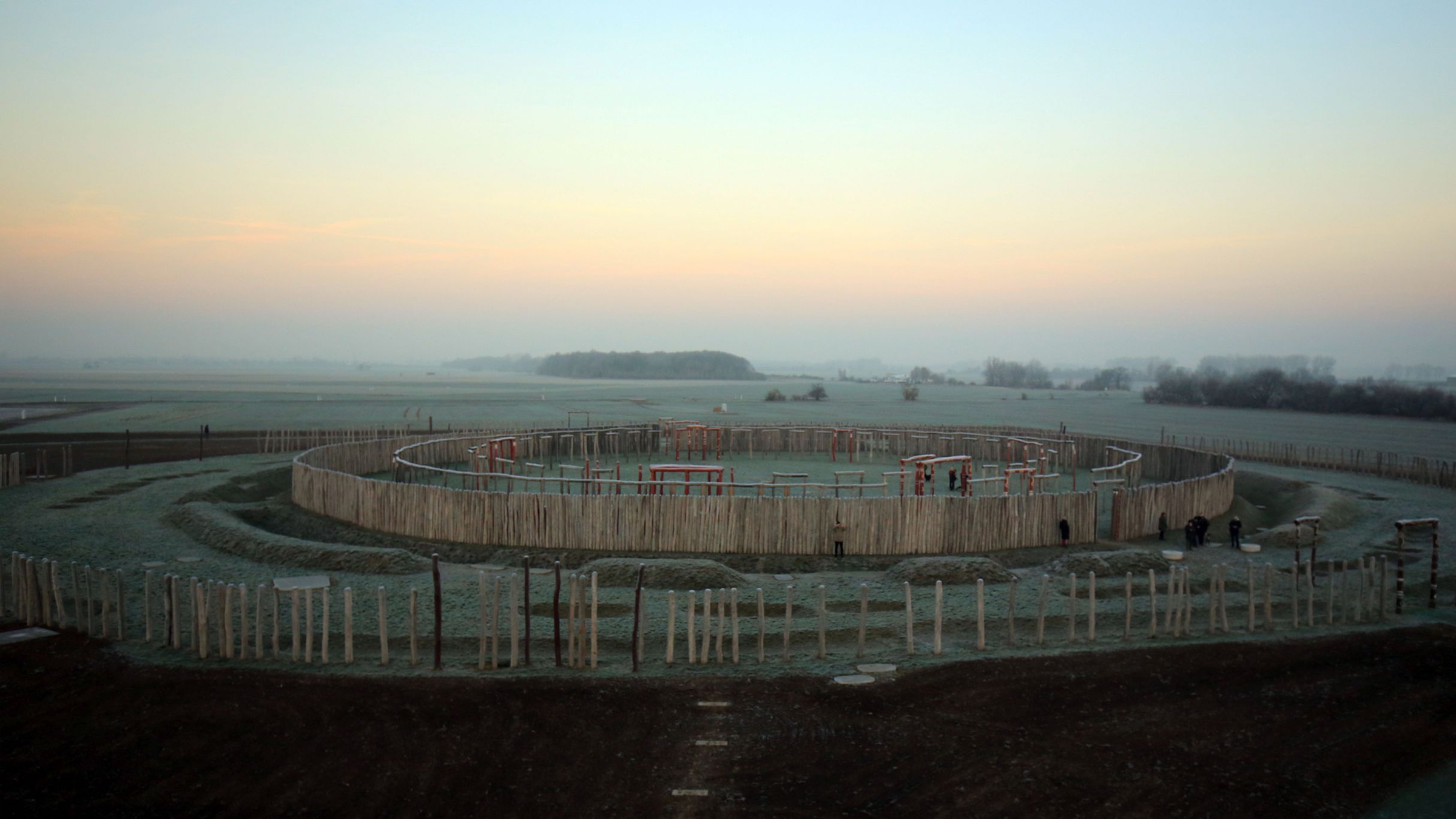Ancient people lived at German 'Stonehenge,' site of brutal human sacrifices
More than 100 residential dwellings were found there.

Germany's "Stonehenge," an ancient site known for its ritual use and gruesome human burials, also served another purpose: Some people called it home, according to archaeologists who recently found evidence of residential dwellings there.
The archaeologists unearthed the remains of two houses, as well as 20 ditches and two human burials during excavations that began in May, Heritage Daily reported. Encouraged, they continued to dig and found more houses, bringing the total to 130 dwellings discovered at the site.
Excavations are ongoing, but researchers hope that these findings and others will shed light on the relationship between the ritual space and the residential aspect of the site, according to Heritage Daily.
Related: Photos: Stone Age skulls found on wooden stakes
Researchers have known about the United Kingdom's Stonehenge for centuries, but archaeologists only became aware of Germany's henge — a circular prehistoric monument built with wood or stone markers — in 1991, when people flying on a plane over the site noticed it.
The German henge is located near the village of Pömmelte, about 85 miles (136 kilometers) southwest of Berlin, earning it the name Ringheiligtum Pömmelte, which is German for "Ring Sanctuary of Pömmelte." The sanctuary's wooden posts were once arranged in several concentric circles, the largest measuring about 380 feet (115 meters) across, Live Science previously reported. This means that Ringheiligtum Pömmelte was slightly larger than the U.K.'s Stonehenge, which extends just over 330 feet (100 m) in diameter, according to English Heritage, a charity organization that helps to protect hundreds of historic sites in England.
While the U.K.'s Stonehenge holds ancient cremated burials, archaeologists have found more macabre burials at the German site, including burials holding the broken bones of children, teenagers and women, who may have been brutally killed as part of human sacrifice rituals, according to a 2018 study published in the journal Antiquity. Excavators also previously found axes, drinking vessels, butchered animal bones and stone mills known as querns buried at the German site, according to the Antiquity study.
Get the world’s most fascinating discoveries delivered straight to your inbox.
However, the new find is the first instance of a residential zone at the site, which dates from the late Neolithic period (late Stone Age) to the early Bronze Age, or from about 2300 B.C. until 2050 B.C., when it was destroyed.
Archaeologists plan to continue excavations at Ringheiligtum Pömmelte in October 2021, Heritage Daily reported. From what they know to date, the archaeologists think Ringheiligtum Pömmelte hosted celebrations for astronomical events, such as the solstices and equinoxes, and served as a center for burials and rituals. Now, it appears that it was also a homestead for ancient inhabitants.
Originally published on Live Science.

Laura is the managing editor at Live Science. She also runs the archaeology section and the Life's Little Mysteries series. Her work has appeared in The New York Times, Scholastic, Popular Science and Spectrum, a site on autism research. She has won multiple awards from the Society of Professional Journalists and the Washington Newspaper Publishers Association for her reporting at a weekly newspaper near Seattle. Laura holds a bachelor's degree in English literature and psychology from Washington University in St. Louis and a master's degree in science writing from NYU.
 Live Science Plus
Live Science Plus






